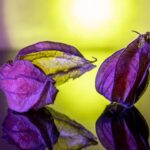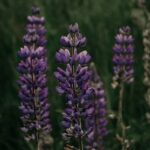Nature landscape drawing ideas offer a wonderful way to explore the beauty of the natural world through art. From lush forests to serene lakes, the possibilities for creating stunning nature landscapes are endless. This section will delve into the many facets of nature landscape drawing, providing tips, inspiration, and techniques for artists of all levels.
Whether you’re a beginner looking to embark on your artistic journey or an experienced artist seeking new ideas, this article will guide you through the captivating world of nature landscape drawing. By immersing yourself in the wonders of nature, you can tap into a rich source of creative inspiration and translate its beauty onto paper.
In this section, we will examine various aspects of nature landscape drawing – from essential drawing supplies to capturing intricate details and exploring different styles. Throughout this exploration, you will discover how the therapeutic and inspiring nature of landscape drawing can fuel your creativity and deepen your connection with the natural world. Join us as we embark on a journey to embrace the artistry of nature through the medium of landscape drawing.
Getting Started
Start With Simple Shapes
When starting out in nature landscape drawing, it’s important to simplify the complex elements of a landscape into basic shapes. This can help beginners get a better grasp of perspective and composition. For example, mountains can be drawn as triangles, clouds as circles, and trees as ovals. By breaking down the landscape into simple shapes, beginners can gradually add more details and complexity to their drawings.
Study Reference Photos
One of the best ways for beginners to improve their nature landscape drawing skills is by studying reference photos of real-life landscapes. By examining the details, colors, and textures of actual nature landscapes, aspiring artists can gain a deeper understanding of how to recreate these elements in their drawings. It also helps in developing an eye for observing the natural world and translating it onto paper.
Practice Regularly
Like any skill, practice is essential for improving in nature landscape drawing. Beginners should set aside regular time to sketch and draw different elements of nature landscapes.
Practicing different techniques such as shading, blending, and creating texture can help aspiring artists develop their own style and approach to capturing the beauty of nature on paper. Additionally, experimenting with various drawing supplies and tools can also aid in finding what works best for individual preferences when it comes to recreating nature on canvas or paper.
Drawing Supplies
When it comes to creating stunning nature landscapes through drawing, having the right materials is essential. Whether you are a beginner or a seasoned artist, using the proper tools can make a significant difference in the overall outcome of your artwork. Here are some must-have drawing supplies that will help elevate your nature landscape drawings to the next level.
First and foremost, investing in high-quality drawing paper is crucial for creating beautiful nature landscapes. Look for paper that has a good tooth and weight, as this will allow you to add layers of colors and details without damaging the surface. Additionally, having a variety of pencils in different hardness levels, such as 2B, 4B, and 6B, will enable you to achieve various shading effects and details in your drawings.
Aside from pencils and paper, having a set of quality colored pencils or pastels can add depth and richness to your nature landscape drawings. Colored pencils are perfect for adding vibrant hues to your artwork, while pastels can create soft and blended effects that mimic natural textures like trees or clouds. Furthermore, investing in a good quality eraser and blending tools will allow you to correct mistakes and achieve seamless transitions between colors and shades in your nature landscapes.
In addition to traditional drawing supplies, consider incorporating other mediums such as watercolors or markers into your artwork for added versatility and creativity. Experimenting with different materials can open up new possibilities for capturing the beauty of nature in your landscape drawings while expanding your artistic skills.
By having these essential drawing supplies at hand, you’ll be well-equipped to create stunning nature landscapes that truly showcase the beauty of the natural world while providing endless opportunities for creative expression.
Inspiration From Real-Life Landscapes
When it comes to nature landscape drawing ideas, one of the best sources of inspiration is the natural world itself. Real-life landscapes offer a diverse range of scenes and settings that can ignite creativity and imagination. Whether it’s a serene meadow, a majestic mountain range, or a tranquil beach, there are endless possibilities for capturing the beauty of nature on paper.
For beginners in nature landscape drawing, starting with simple yet captivating scenes can be a great way to build confidence and skills. Look for landscapes with distinct features such as winding rivers, towering trees, or rocky cliffs. By observing and sketching real-life landscapes, aspiring artists can hone their ability to capture the essence of different natural environments.
Drawing supplies play an essential role in bringing nature landscape drawings to life. From high-quality pencils and paper to various shading tools and erasers, having the right materials is key to creating stunning nature landscapes. Additionally, exploring different techniques such as stippling, hatching, or blending can add texture and depth to drawings inspired by real-life landscapes.
| Nature Landscape Drawing Ideas | Real-Life Landscape Scenes |
|---|---|
| Natural Elements (trees, water bodies, mountains) | Meadows |
| Drawing Supplies | Mountain Ranges |
| Diverse Techniques | Beaches |
Drawing Techniques
Nature landscape drawing offers an incredible opportunity to capture the beauty of the natural world on paper. One important aspect of creating stunning nature landscapes is understanding and implementing drawing techniques that can bring depth and perspective to your artwork. Here are some step-by-step techniques to help you achieve this goal:
1. Start with a sketch: Begin by lightly sketching the basic elements of your landscape, such as mountains, trees, or bodies of water. This initial sketch will serve as the foundation for adding depth and perspective to your drawing.
2. Use overlapping layers: By layering different elements in your landscape drawing, you can create a sense of depth. For example, placing trees in front of a distant mountain range or overlapping waves on a body of water can enhance the three-dimensional quality of your artwork.
3. Utilize atmospheric perspective: This technique involves using color and detail to convey distance in a landscape. Objects that are closer should have more vibrant colors and sharper details, while those in the distance should appear lighter in color and less defined.
4. Incorporate vanishing points: When drawing landscapes with linear elements like roads or fences, incorporating vanishing points can create a sense of depth and distance. This helps to guide the viewer’s eye into the scene, making it feel more realistic.
5. Pay attention to scale: Be mindful of scale when including various elements in your nature landscape drawing. Adding smaller details in the distance while emphasizing larger objects in the foreground can enhance the illusion of depth.
By incorporating these techniques into your nature landscape drawings, you can bring new life to your artwork and create captivating scenes that truly capture the essence of natural beauty.
Capturing the Details
When it comes to nature landscape drawing, adding intricate details is essential for creating a realistic and visually captivating artwork. Whether you are drawing mountains, forests, or bodies of water, paying attention to the small details can truly bring your drawing to life. Here are some tips and techniques for adding intricate details to your nature landscapes:
1. Study and Observe: Before even putting pencil to paper, take the time to study the nature landscape you intend to draw. Look closely at the textures, patterns, and details present in the scene. Take note of how light falls on different elements and any unique features that stand out.
2. Use Texture Techniques: Experiment with different drawing techniques like stippling, hatching, and cross-hatching to create texture in your nature landscape. For instance, use stippling to mimic the rough texture of rocks or hatching for the foliage in a forest.
3. Incorporate Fine Lines and Accurate Shapes: Pay attention to finer details such as individual leaves on trees, ripples in water, or pebbles on a beach. Utilize fine lines and accurate shapes to depict these small elements realistically.
By focusing on these details, you can elevate your nature landscape drawing from simple sketches to impressive pieces of art that truly capture the beauty of the natural world around us.
Remember that there are endless possibilities when it comes to nature landscape drawing ideas. Look for inspiration from real-life landscapes such as serene lakeshores, breathtaking mountain ranges or peaceful meadows – all of which can provide wonderful subjects for your next masterpiece. Embrace the challenge of capturing intricate details in these natural scenes and let their beauty fuel your creativity as you embark on your next nature landscape drawing project.
Different Styles of Nature Drawing
When it comes to nature landscape drawing, there are various styles and approaches that artists can explore to capture the beauty of the natural world. One popular style is realism, which focuses on accurately depicting landscapes with intricate details to create a lifelike representation. Artists can achieve this by paying close attention to lighting, shadows, and textures in their drawings. Realism is perfect for those who want to showcase the actual beauty of nature through their artwork.
On the other hand, some artists may prefer a more impressionistic style when creating nature landscapes. This approach involves capturing the essence of a landscape rather than its precise details. By using looser brushstrokes and blending colors together, artists can evoke a sense of mood and atmosphere in their drawings. The impressionistic style allows for more artistic interpretation and creativity, giving artists the freedom to convey emotions and feelings through their nature landscape drawings.
Additionally, there’s also a contemporary approach to nature landscape drawing that incorporates elements of abstraction and experimentation. This style often involves using unconventional techniques and materials to create unique interpretations of landscapes.
Artists who are drawn to contemporary art may enjoy pushing the boundaries of traditional landscape drawing by incorporating unexpected elements or experimenting with different mediums. No matter which style an artist chooses, finding inspiration from real-life nature landscapes can spark creativity and provide endless opportunities for beautiful and captivating artwork.
By exploring different styles of nature drawing, artists can find new ways to express their love for the natural world while showcasing their unique artistic voices. Whether it’s through realism, impressionism, or contemporary art, each approach offers its own set of challenges and rewards for artists seeking to capture the beauty of nature through landscape drawing.
Finding Creativity in Nature
When it comes to finding creativity in nature, there are endless possibilities for inspiration in landscape drawing. The intricate details of a flower, the grandeur of a mountain range, or the peacefulness of a flowing river can all serve as sources of creative energy. By immersing oneself in the natural world, artists can find the motivation to create stunning nature landscapes on paper.
Connecting With Nature
One way to fuel creativity in landscape drawing is by spending time outdoors and connecting with nature. Taking a leisurely walk through a forest, sitting by a tranquil lake, or even just observing the sky at different times of day can provide fresh ideas for drawings. Paying attention to the colors, textures, and shapes found in the environment can inspire new artwork and bring a greater sense of connection to the natural world.
Exploring Different Perspectives
Another approach to finding creativity in nature landscape drawing is by exploring different perspectives. Instead of simply recreating what is seen at face value, artists can experiment with unique angles or viewpoints. For example, capturing the view from beneath a canopy of trees or looking up at towering mountains can add an interesting twist to traditional landscape drawings.
Embracing Natural Elements
In addition to connecting with nature and exploring different perspectives, artists can also incorporate natural elements into their work. Using actual leaves, twigs, or flowers as stencils or incorporating them into mixed media pieces can add depth and texture to nature landscapes. This not only brings an extra layer of authenticity to the artwork but also encourages a deeper appreciation for the beauty found in nature itself.
By using these techniques and embracing the beauty of the natural world, artists can tap into their creative potential and produce breathtaking nature landscape drawings that capture the essence and allure of their surroundings.
Conclusion
In conclusion, nature landscape drawing offers an incredible opportunity to connect with the beauty of the natural world and unleash one’s creativity. By exploring real-life landscapes and embracing different drawing techniques, artists can capture the essence of nature in their artwork. Whether you’re a beginner or a seasoned artist, there are endless possibilities for finding inspiration in the great outdoors and translating it into compelling landscape drawings.
Drawing supplies play a crucial role in creating stunning nature landscapes, and it’s important to invest in quality materials that allow for depth, texture, and detail. From soft graphite pencils to vibrant colored pencils and versatile sketchbooks, the right tools can make all the difference in bringing your nature landscape drawings to life.
The therapeutic benefits of nature landscape drawing cannot be understated. The act of immersing oneself in the process of capturing a beautiful landscape on paper can be incredibly calming and meditative. Moreover, finding creativity in nature allows artists to express their unique perspectives and emotions through their artwork.
As such, nature landscape drawing is not just about capturing what we see – it’s about conveying how we feel when surrounded by the awe-inspiring beauty of the natural world. Whether you’re seeking new ways to connect with nature or looking for fresh ideas to elevate your artistry, exploring the world through landscape drawing is an enriching journey that offers endless possibilities for creative expression.
Frequently Asked Questions
What Are the 3 Types of Landscape Drawing?
The three types of landscape drawing are representational, impressionistic, and abstract. Representational landscape drawing aims to portray scenes realistically and accurately. Impressionistic landscape drawing focuses on capturing the mood and atmosphere of a scene, using loose, gestural marks. Abstract landscape drawing involves simplifying and distorting the natural forms to create a more subjective and expressive representation.
What Makes a Good Landscape Drawing?
A good landscape drawing is one that effectively conveys the essence of the natural scene. This can be achieved through careful composition, use of perspective, understanding of light and shadow, and attention to detail. A good landscape drawing also reflects the artist’s unique interpretation and emotional connection to the subject matter.
What Can I Draw From Nature?
From nature, you can draw a wide range of subjects including landscapes, seascapes, plants, flowers, trees, wildlife, rocks, rivers, mountains – basically anything found in the natural environment can be drawn. Many artists find inspiration in nature’s beauty and challenge themselves to capture it on paper or canvas through their artistic skills.

Welcome to my gardening blog! I am passionate about plants and enjoy sharing my knowledge and experiences with others. In this blog, I will write about everything related to gardening, from tips on how to get started to updates on my own garden projects.





